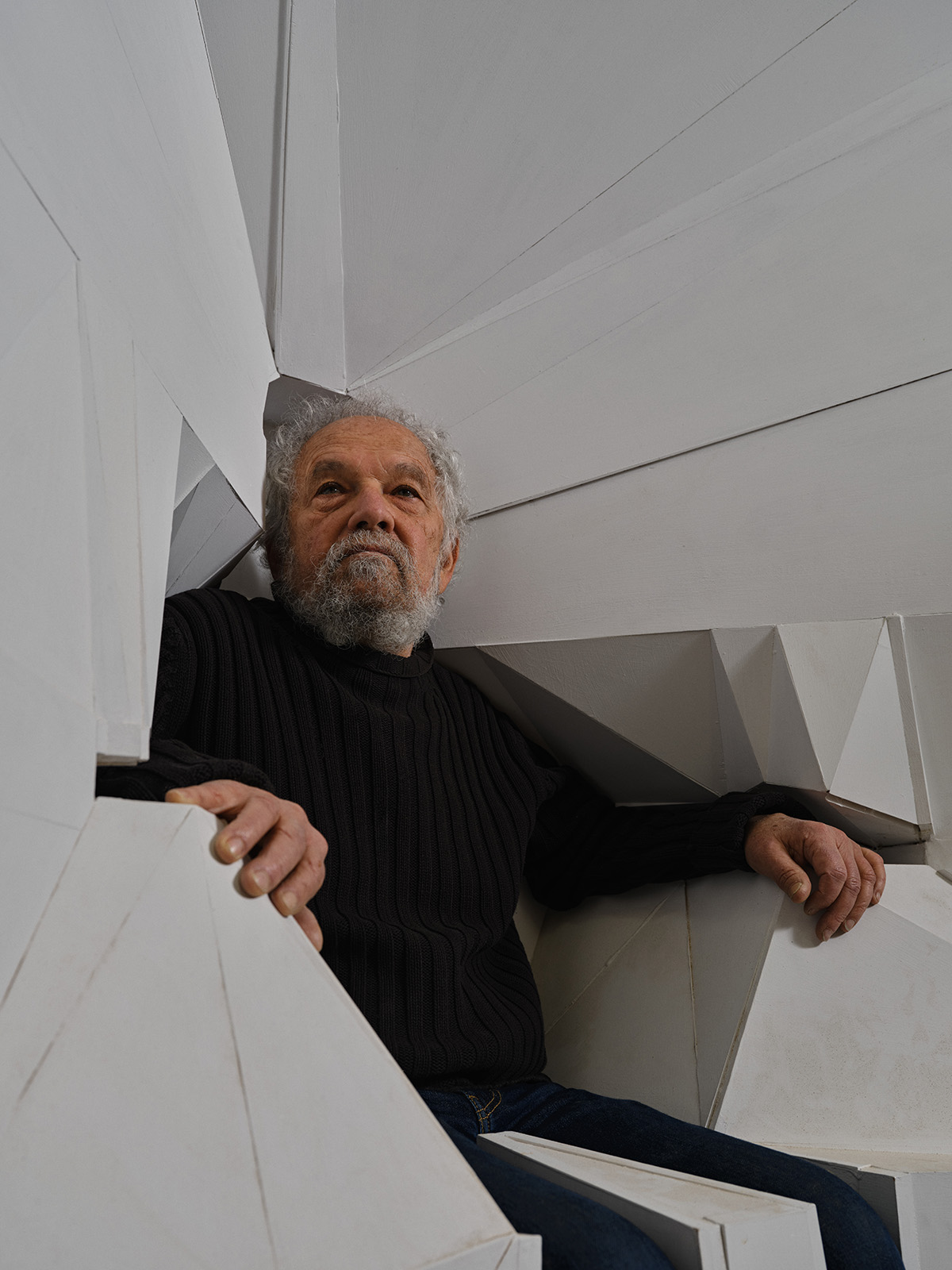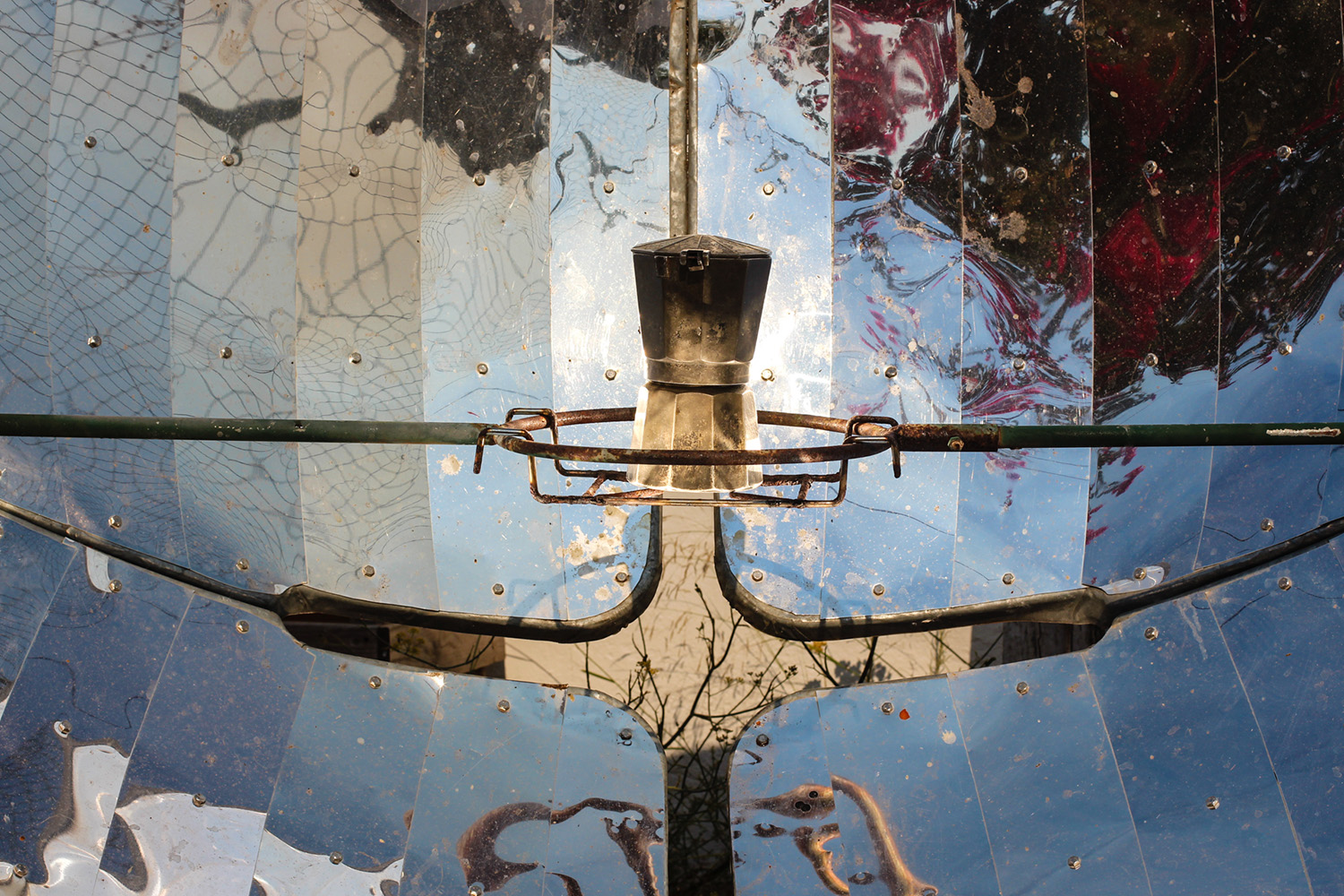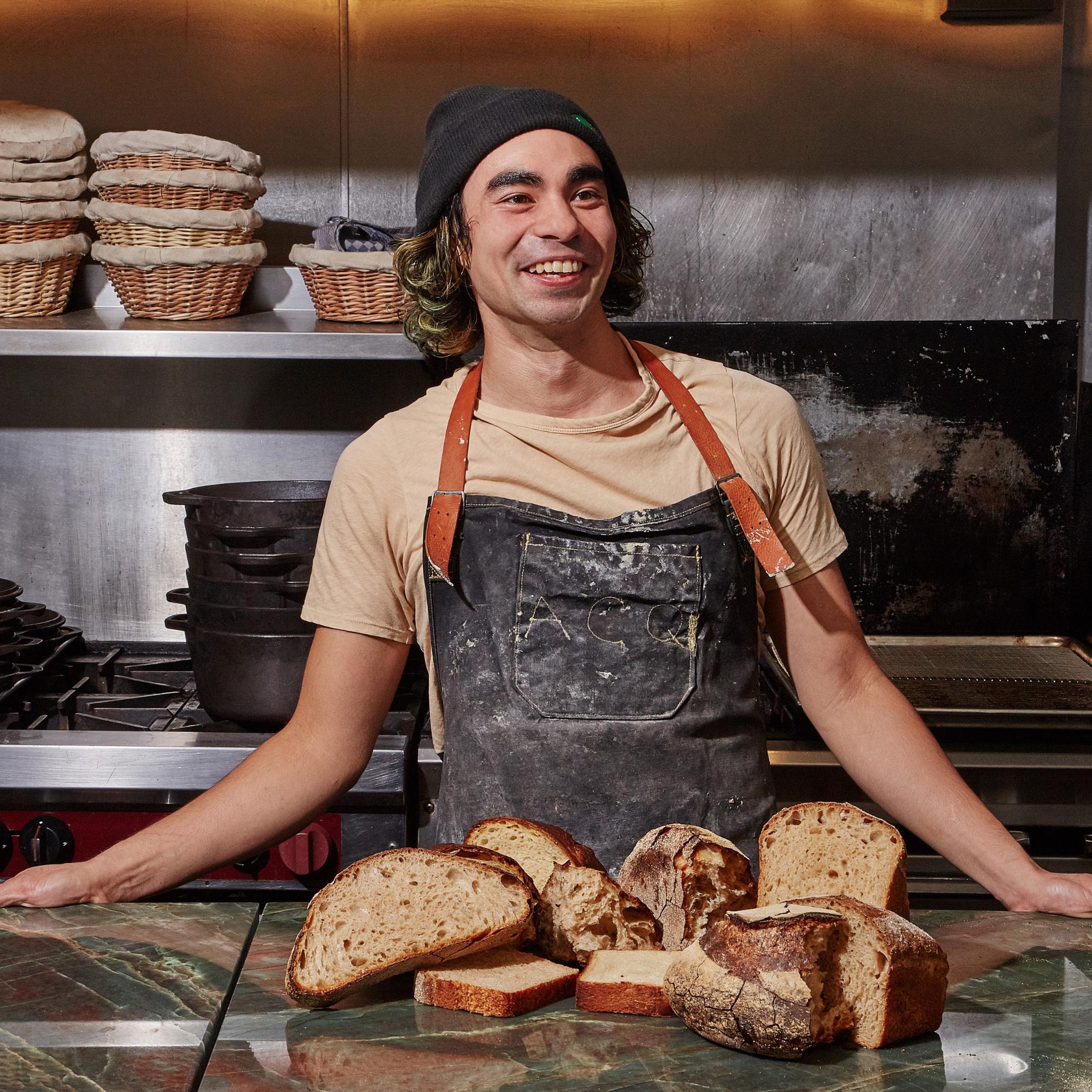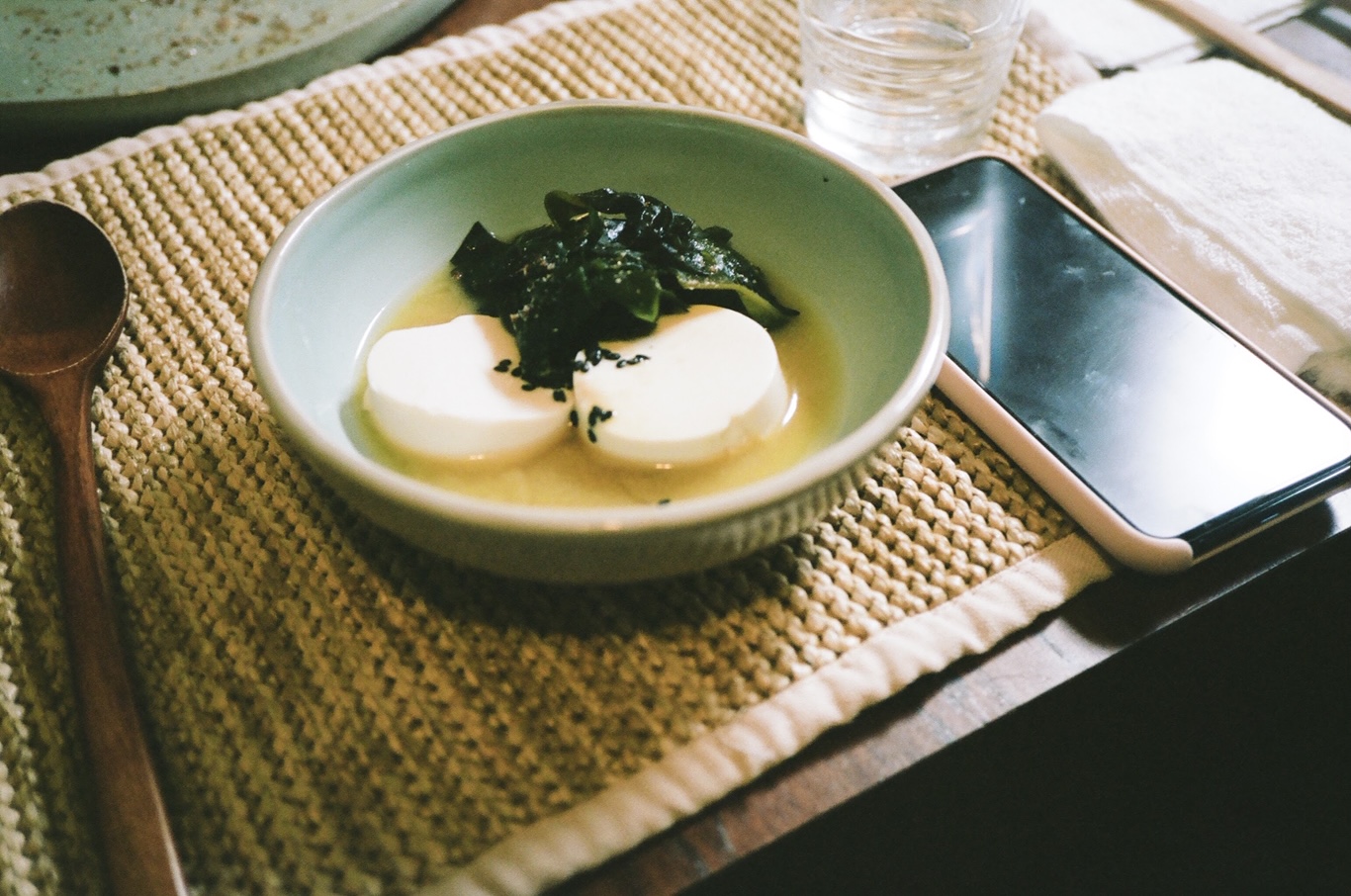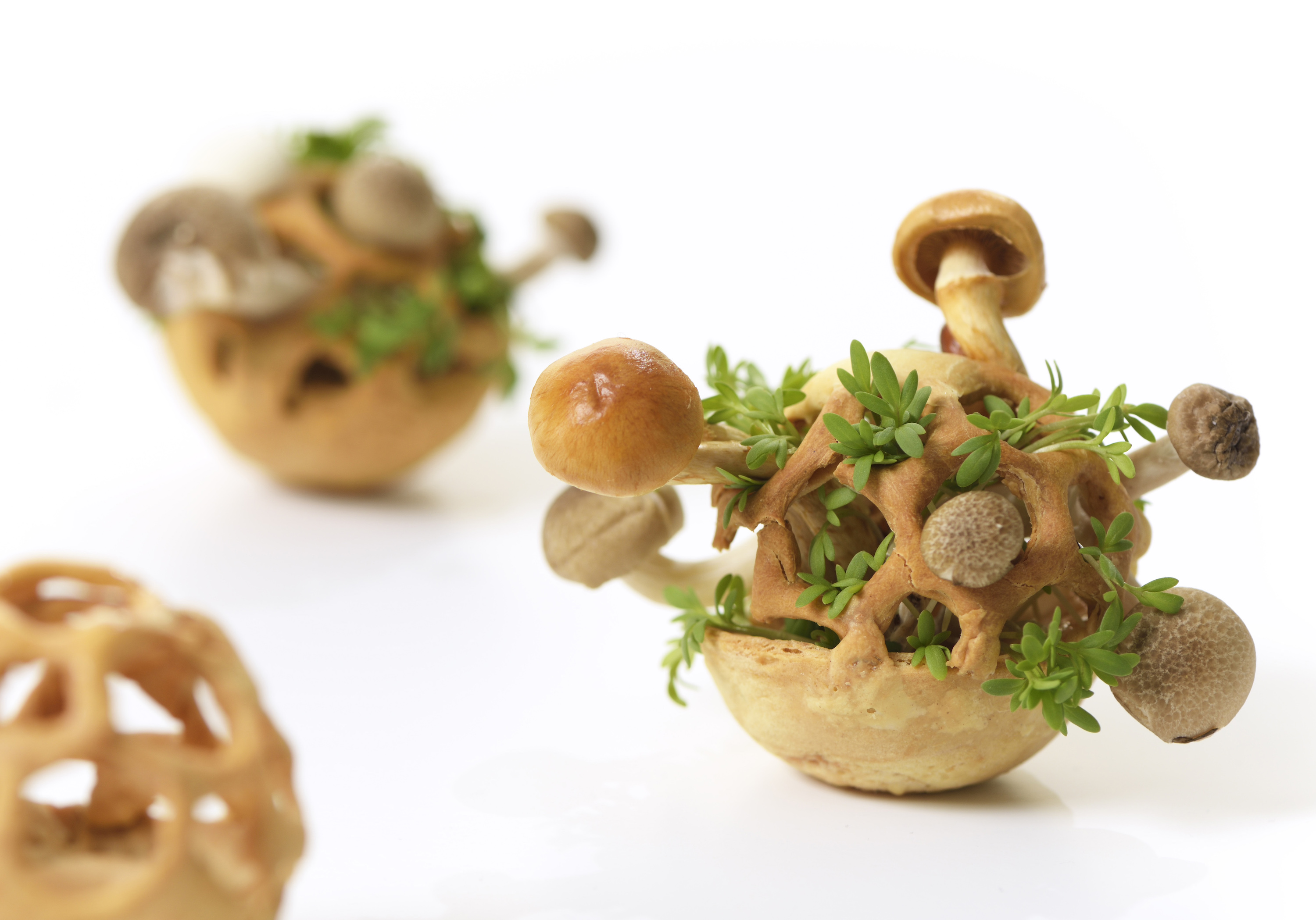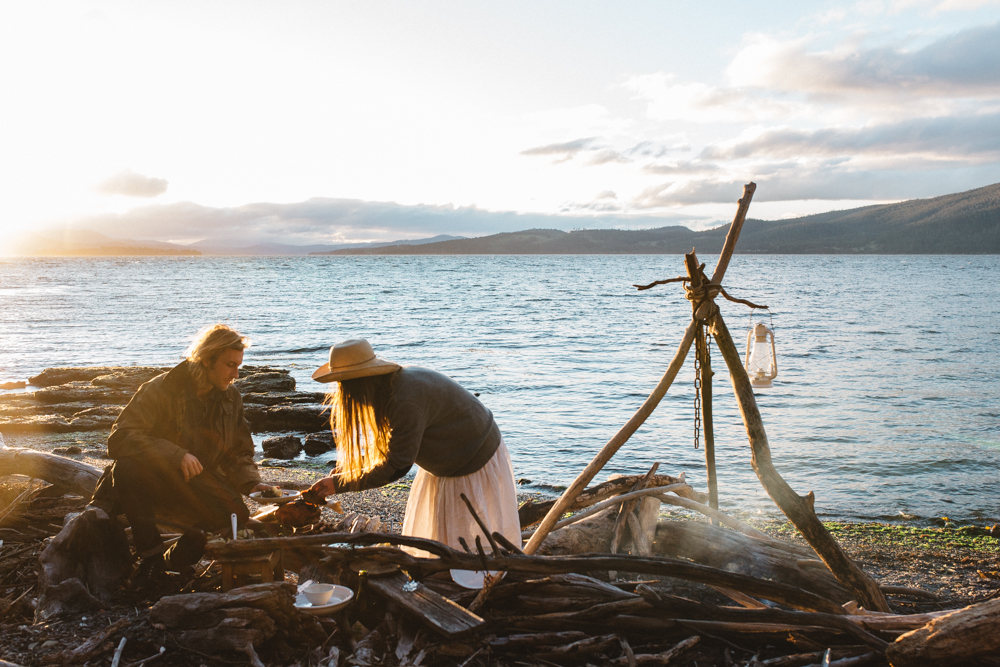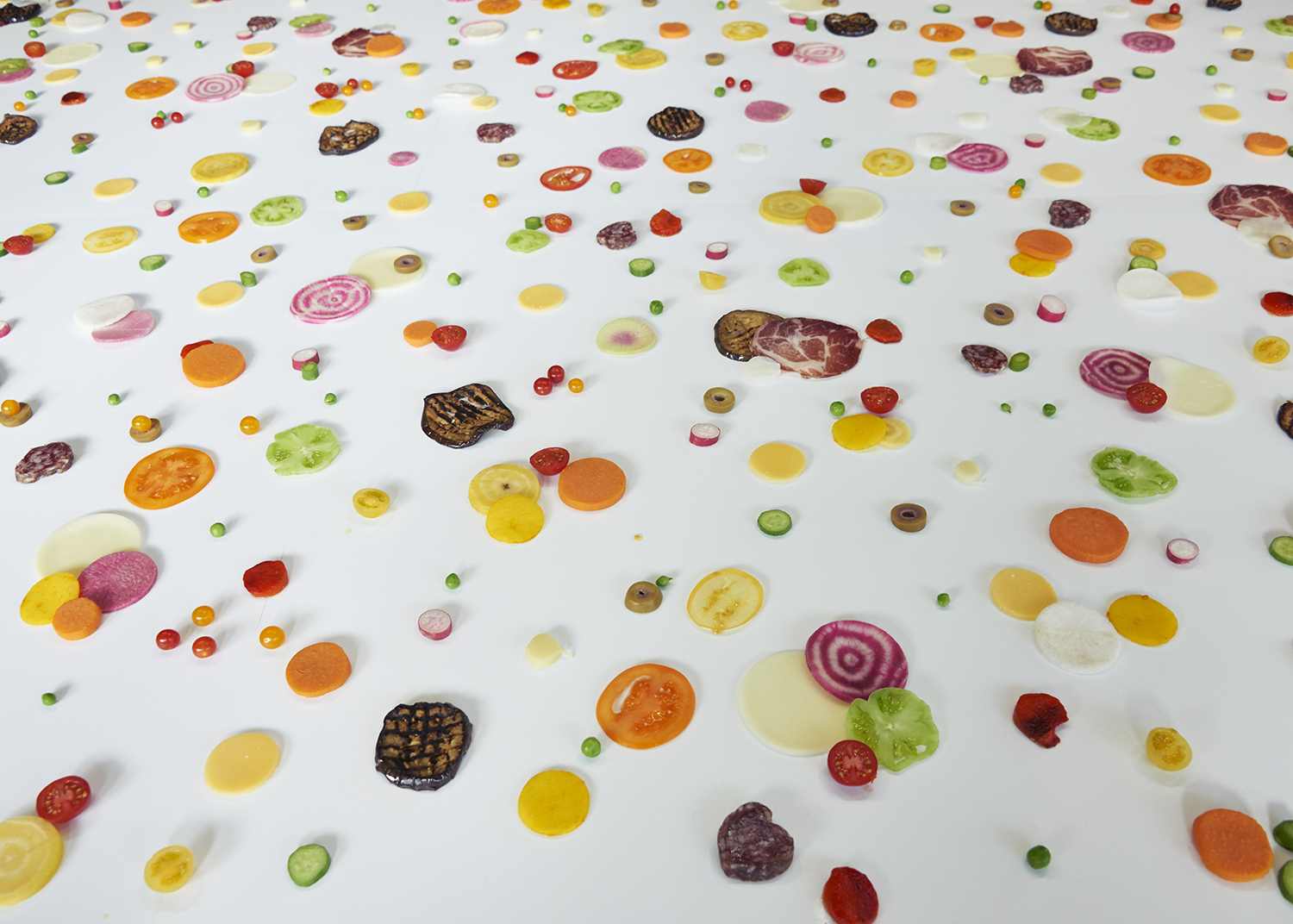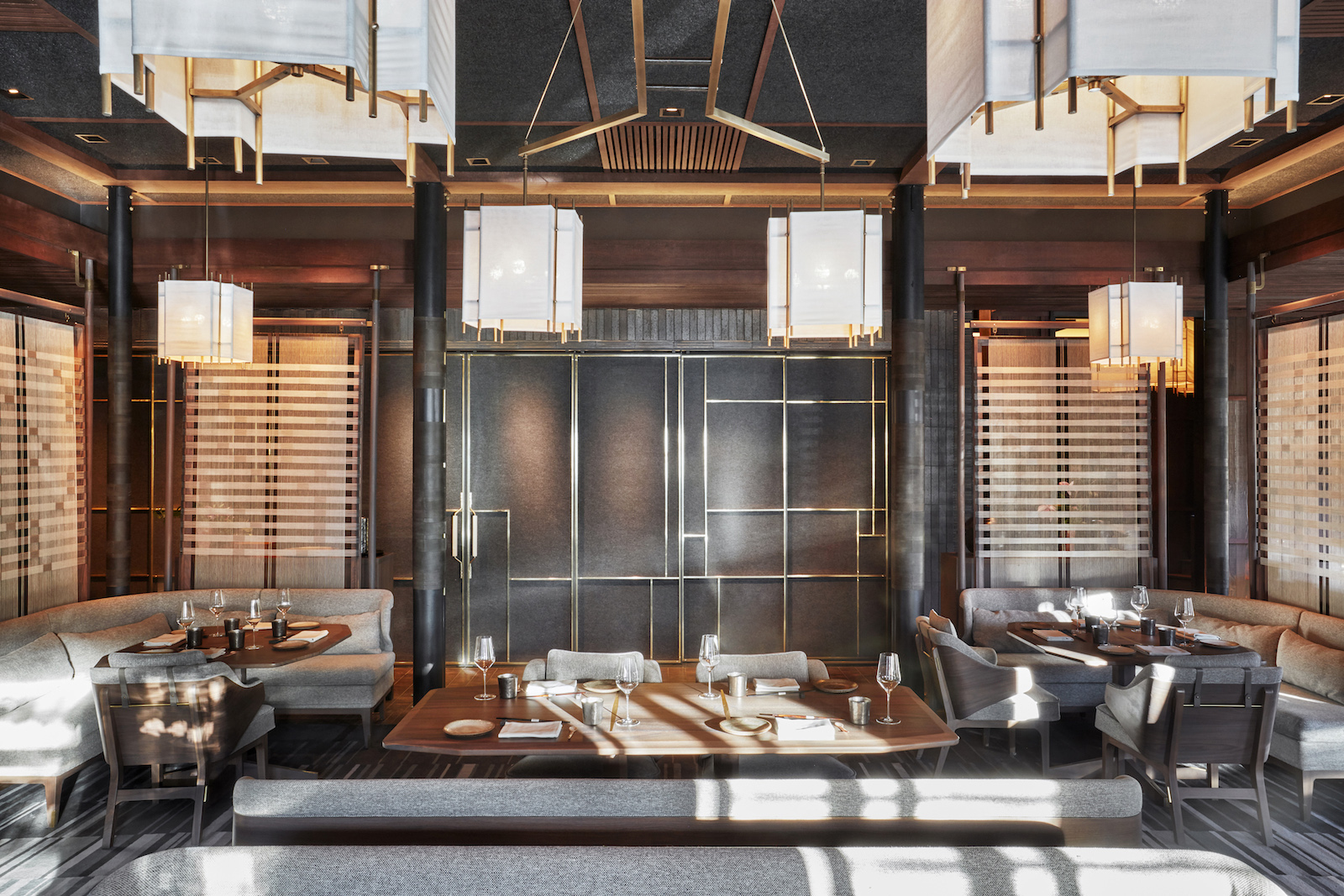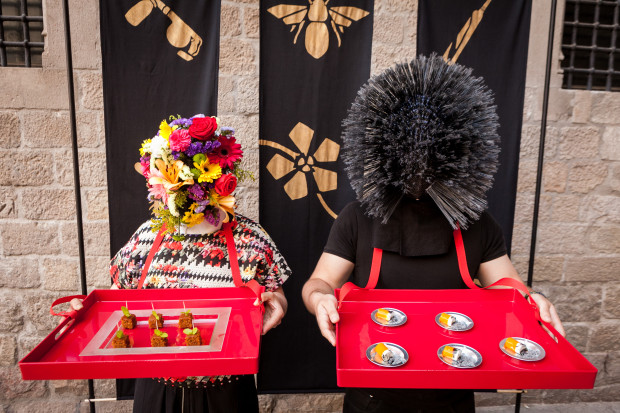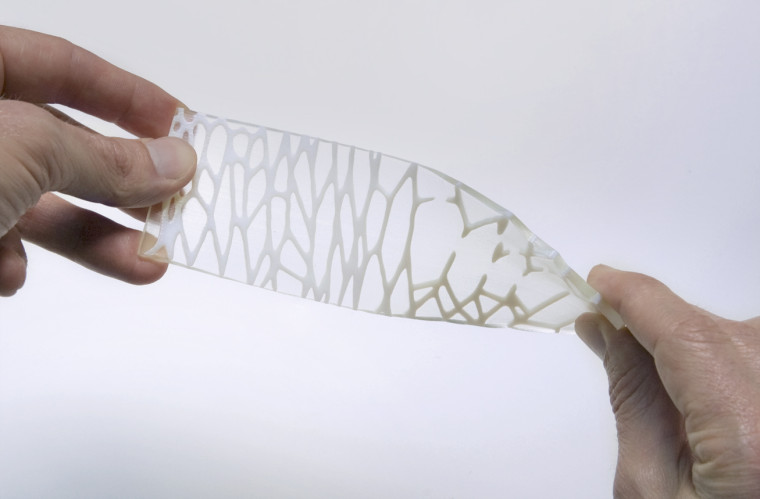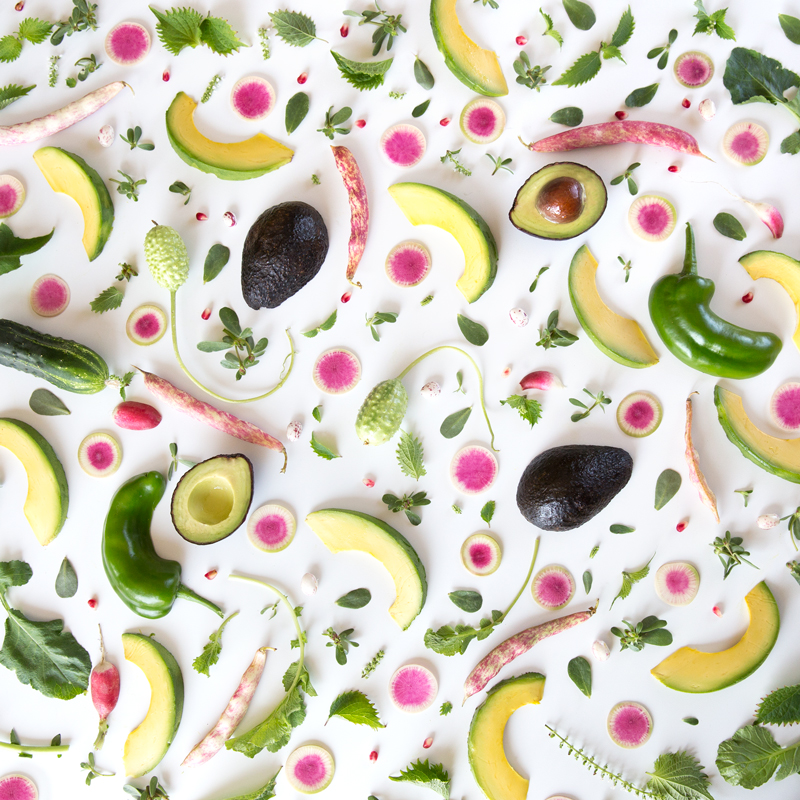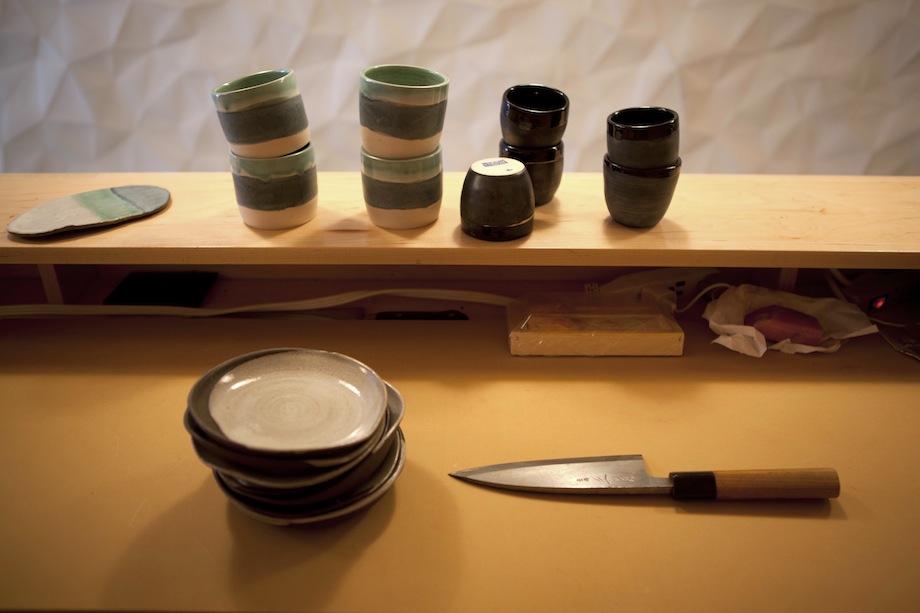This story is part of MOLD Magazine: Issue 02, A Seat at the Table. Order your limited edition issue here.
Food and experimentation are recurring theme in Italian designer Martino Gamper’s work. Before studying sculpture at Vienna’s Academy of Fine Arts and later while pursuing a Masters at the Royal College of Arts in London, Martino worked in kitchens where he learned the art of improvisation.
Works such as 100 Chairs in 100 Days, in which he created useful new chairs by fusing the stylistic and structural parts of discarded seats found on London streets, demonstrate Gamper’s ability to revel in the process and create truly unique work.
 Giro from 100 Chairs in 100 Days.
Giro from 100 Chairs in 100 Days.
Based in London, Martino and his wife, artist Francis Upritchard, have recently renovated a printing factory into their living and work quarters. MOLD spoke to Gamper in their studio kitchen where the couple take breaks, cook and eat together with colleagues to punctuate their day.
 Art & Business Culture House dinner, photo by Amit Lennon.
Art & Business Culture House dinner, photo by Amit Lennon.
Claire Walsh: What is the immediate connection you see between food and design?
Martino Gamper: I think they’re not too far apart from each other. You start off with a set of materials or ingredients, and they vary depending on where you are. And then you have a set of processes, i.e. cooking. You take material away, you add material, you mold something, and so on. And these processes are being reinvented as we speak, but somehow, we always come back to what we could have done many, many years ago. So, from a creative point of view they are similar.
 Sonnet Butterfly from 100 Chairs in 100 Days.
Sonnet Butterfly from 100 Chairs in 100 Days.
CW: How do you use food as a tool in your process?
MG: Well luckily, we should take food every…what 4, 5, 6 hours a day? So, there is a break to maybe have conversations or continue a conversation. I think that can help in the design process. I mean for us [Gamper’s studio and studiomates] it is true. We try to cook every day together, and it slows things down a bit. It’s not just something that we have to do, it’s something we can enjoy and do together.
CW: You’ve been called an improvisational designer; do you cook similarly to the way you design?
MG: Oh yeah, absolutely. The way I cook is quite like the way I design. It’s kind of a process but it’s quite spontaneous and quite improvisational—I use whatever I have available. I actually cannot keep to a recipe!
 Ply on Ply from 100 Chairs in 100 Days.
Ply on Ply from 100 Chairs in 100 Days.
CW: Tell me how Trattoria al Cappello, the pop-up dinners where you and your collaborators designed everything from the food to the furniture, started?
MG: Four of us that started the project; me, Maki Suzuki, Kajsa Ståhl and Alex Rich. The project evolved out of a lack of places that we liked to go to find something to eat so we decide to create something ourselves. We were all interested in cooking and the social aspects of getting people together. We found a warehouse space that had a bar and a license, but no food. We had the food, they had the drinks, so it was kind of a perfect combination.
 Barbapapa from 100 Chairs in 100 Days.
Barbapapa from 100 Chairs in 100 Days.
CW: Has it played a big role in your career?
MG: Yes, I think so. A lot of work came out of it somehow. Initially it was experimental and maybe we were designing out of a necessity to create these events. That experience was later translated into something more, I wouldn’t say commercial, but more product or into other ideas.
CW: Did your experience with Trattoria affect how you design an object?
MG: During a Trattoria event we moved around a lot and we could observe people while we cooked and while we ate together. It gave me a different viewpoint on the table, and I saw how people interact both with the furniture and with one another.
Where you position yourself and how you face someone is something I think about. I like to create very individual looking chairs, a bit like people sitting around a table—all the same but slightly different. Rita, for example [created for Milan’s Gallery Nilufar], has a left and a right, so there is the sense of two people having a conversation.
 Alpino from 100 Chairs in 100 Days.
Alpino from 100 Chairs in 100 Days.
CW: You also designed playful tableware for Trattoria, too.
MG: Yes, we customized cutlery. We drilled a hole in all the pieces, so all the spoons were on a ring. You would pass the cutlery around the table like a relay.
CW: What about the pepper grinder you designed? The shape is interesting.
MG: I realized that with a lot of round or square pepper grinders, when you hold them your body is at an angle. When something is conical it is easier to turn. So, I slice away corners until it feels nice in the hand. When I see a piece of wood, I always imagine slicing a bit away. I don’t like straight edges.
 Omback from 100 Chairs in 100 Days.
Omback from 100 Chairs in 100 Days.
CW: Your tables tend to be irregular shapes too.
MG: Once you have eight people around a table there is not one single conversation but a lot of smaller ones. Each of my tables is a different shape so I can recreate the layout or composition of how people like to sit together. They can sit close together in the middle or further apart at the sides to make the experience more than something square, rectangular or round; those shapes don’t do justice to the way we sit around a table. Even if I do a round table, it will be oval so people can be closer in the center.
 Back Issue from 100 Chairs in 100 Days.
Back Issue from 100 Chairs in 100 Days.
CW: How do you approach the design of a table?
MG: I like to create flexibility. People often ask for a “little extension,” and I ask them, “Why have an extension you use once a year? Why don’t you have two tables that become a larger table?” There is a sense of modularity and generosity by keeping a table a certain size. Tables are used not only to eat on, but also for work and for other activities.
 Tubolare from 100 Chairs in 100 Days.
Tubolare from 100 Chairs in 100 Days.
CW: Do you still ask for a dinner invitation when you are commissioned to design a table? Why is that?
MG: I try to get a sense of the environment. I observe behavior and how people eat: Is it just something they are putting on for me, or is it a regular occurrence? What’s the family ambience? [Dining together] creates all kinds of dynamics. A table can be a centerpiece in the house where the family gathers, where meals are being cooked—it is the kind of thing that pulls us…a nucleus.
